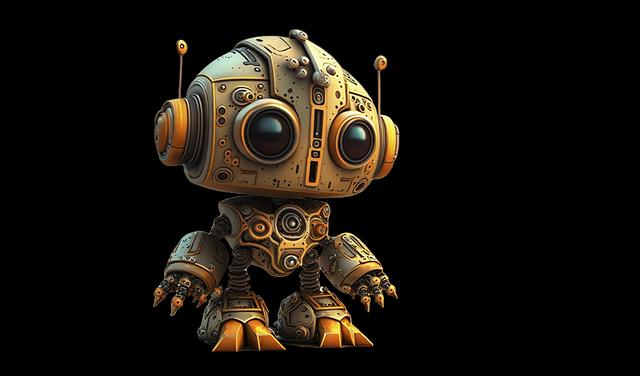How to use ChatGPT to write website content
ChatGPT is an artificial intelligence (AI) copywriter. As a copywriter (albeit a robot version), it can certainly speed up the website copywriting process.
First, it helps to understand…
What is ChatGPT?

ChatGPT is a natural language processing model developed by OpenAI. Imagine it as a library of books that learned to talk in human-like text itself. If you’re using an AI copywriter correctly, you’ll feel like you’re working with a human copywriter at the top of their game — and on their fifth cup of coffee.
Working with ChatGPT is like having a conversation with a well-read, informed, and (sometimes) witty writing partner. You ask it a question (called giving it a prompt) et voila…
Out comes a piece of writing that might give the best copywriter a run for their money. (The quality of the output depends very much on the quality of the input. To get the quality of your output to the highest level in the shortest possible time, you need ChatGPT training from an expert.)
So, what does writing with ChatGPT mean for you and your website?

Imagine having an unlimited supply of fresh, engaging, and intelligent content on tap. Blog posts, product descriptions, FAQs, email subject lines, long-form content, catchy headlines — you name it, ChatGPT can do it.
All you need to know is how to ask it the right way. When you know how to ask ChatGPT the right way, you’ve got a team of Hemingways, Kings and Rowlings working together to generate content on your website. (All without the ego clashes and week-long delays because of writer’s block.)
Excited? Us, too, so let’s pop the bonnet and get into the wiring of this word wizard. Come with us as we show you how you can use ChatGPT (or another AI copywriter) to jazz up content writing and up your website content.
How does ChatGPT actually work to create content?
ChatGPT is based on something called a transformer model. What does it transform?
Your prompts > Smart output (gorgeous, tailored content).
To get to black-belt writing ability, AI copywriters are trained to create content on an incomprehensible amount of text. (Think of an enormous word sponge soaking up website after blog post after Wikipedia entry). With every webpage that ChatGPT reads, it learns.
When you give ChatGPT a prompt, the AI copywriter scans its vast library of language patterns and structures. The AI aims to write the most sensible output that is relevant to the context you gave. (Context means telling the AI you want an answer relevant to, say, travel or to a blog post or a poem or…)
Does ChatGPT plagiarise the text it’s trained on?
An AI writing tool doesn’t just regurgitate facts and phrases they’ve seen before. AI content creation is a remix of the right information in fresh and exciting ways.
How much you like that AI-generated content depends very much on how well you prompted the AI.
So, when you feed an AI writing tool a prompt like “Write a blog about the history of pizza”, ChatGPT gets to work on content creation, sifting through its digital library. Then it churns out words until you say so or until it hits the built-in limit on length.
(You should know, though, that “write a blog post about x” is not a good prompt. Prompts like that are why people complain their outputs are bland or off-track. If you want high-quality content, you need better prompts.)
Why your website needs a touch of ChatGPT magic to generate content
Ever felt like keeping your website content fresh, engaging and updated is a full-time job? Yeah, us too. But it doesn’t have to be anymore.
What makes AI writing tools like ChatGPT the perfect assistant copywriters for your website?
Unlimited creative juice
Imagine a writer that never gets tired, never runs out of ideas, and can whip up a storm of words faster than Nespresso makes coffee.
And if you don’t like what ChatGPT writes the first time, you ask it to try again. AI writing tools never pushback with a scowl. They never give anything less than the same creative excitement they gave you the first time you asked.
Your 24/7 content marketing wizard
Time zone mismatches? Flakey writers? Deadlines hurtling at you like freight trains? Forget them all. ChatGPT doesn’t sleep, doesn’t take holidays, and never claims writer’s block.
Working with an AI-powered tool is like your personal content-producing superhero, always ready to save the day…or night. (Providing all it takes to save the day or night is to create high-quality content.)
Personalisation powerhouse
Your website is unique, and your content should be too. When you know how, ChatGPT can be customised to speak in your brand’s voice, appealing directly to your audience.
A good AI copywriter is like a digital chameleon when you know how to work it. You can adapt the AI writer to fit the style and tone of your content writing.
The cost-effective way to produce high-quality content
Hiring a team of content-writing ninjas can burn a hole in your pocket faster than a rocket-powered drill. But with ChatGPT, you get the quality of a professional writer at a fraction of the cost. It’s like having a 24/7 content-writing team that doesn’t demand perks or ping-pong tables in the office. Plus, they never deviate from your content creation process.
AI copywriters can write anything
You can use AI at any point in the content creation process. You can brainstorm ideas with your tool or you can write product descriptions, meta descriptions, blog posts, newsletters, social media posts, FAQs… the possibilities with ChatGPT are as limitless as the cosmos. It’s like having infinite tools on your Swiss Army knife of content creation, whether the tools are repurposing existing content, writing new content, giving your email subject lines some verve.
And if you’re thinking this all sounds like a sci-fi dream, it isn’t. Yes, it would have been a couple of years ago, but today this AI word wizard is here, it’s real, and your competition is using it. (Or if they’re not, you have a chance to steam ahead.)
So, are you ready to take this AI-powered content beast for a spin? If your answer is a resounding “YES!” (and it should be), then let’s blast off to our next section. Fasten your seat belts; it’s time to learn how to use this magical tool.
Getting chatty: how to start using ChatGPT in content creation
Now that you’re all pumped up about the ChatGPT magic (and who wouldn’t be?), let’s talk about how to get this party started. Getting ChatGPT to write is as simple as making instant noodles. To become a master of using ChatGPT for content generation, you can proceed by trial and error, which can be slow (and who knows what potential skills you might miss) or you can take AI copywriting training.
Step One: Greetings and salutations, ChatGPT
First, you’ll need access to the ChatGPT tool. Using ChatGPT will feel like magic, but the doorway isn’t hidden in a wall at a train station.
You’ll have to sign up, but you’re not signing your life away. There’s even a free account, although we recommend the more powerful paid account, ChatGPT Plus.
Step Two: Have a chat with ChatGPT
Once you’re signed up, it’s time to start chatting with ChatGPT for content too. And it really is a chat — no need to be formal, but it doesn’t hurt to be clear.
Simply type in your prompt or question and hit enter. You could say something like, for example “Write me a blog post about the history of chocolate,” or “Create a product description for a futuristic toaster.”
Now, ChatGPT can feel spooky, but it isn’t psychic, so the more specific you are with your prompt, the better your results will be. “Write a blog post about the health benefits of eating chocolate for breakfast, targeted towards fitness enthusiasts,” will give you much more targeted results.
(And when you’re ready to take your prompts to a whole new level, we’d love to see you on our ChatGPT course.)
Step Three: Put your feet up and watch the magic happen
After you hit enter, ChatGPT will fire up like a struck match. Your choice is to:
- Ask the AI copywriter to try again (perhaps tweaking the prompt)
- Tweak the content yourself
- Take it as it is
The higher your level of skill with prompting the AI, the more often you’ll be able to walk through door #3 — using the content as it comes. (Or at least having only to tweak it a little.)
Turbocharging your content: making the most of ChatGPT
Short of taking an AI copywriting training course, here’s how to squeeze every last drop of goodness out of ChatGPT.
Tip 1: Specificity is your secret weapon when prompting ChatGPT
When it comes to ChatGPT, the more specific you are with your prompt, the better the results. Saying “Write me a love letter” might get you a decent result, but try this to see the difference in the flair you get: “Write a love letter from a pirate to his beloved, who waits for him back at port.”
Tip 2: Keep your ChatGPT prompts conversational
ChatGPT isn’t your stuffy English teacher. It’s more like that quick-witted friend who always has the perfect comeback. So, don’t be afraid to be conversational and friendly in your prompts. If you ask it to “spill the tea on the latest social media trends,” it’ll know what you mean. That’s because ChatGPT has read more slang (and highbrow content) than any of us could in a dozen lifetimes.
Tip 3: Add a dash of creativity to your prompts
There’s no rule that says your prompts need to be as dry as last week’s bread cake. Get creative. Ask ChatGPT to “describe a sunset as if it were a symphony” or to “write a product description for a vampire’s toothbrush.”
One of the most rewarding parts of working with an AI copywriter is that it’ll never look at you like you’re mad. So you’re free to beat your chest, howl at the moon or dance like no one is looking — all to see where it gets you.
Experimentation is key.
Tip 4: Edit your ChatGPT outputs like a pro
Someone once said (ChatGPT could probably tell you who) that great writing is great editing.
Just because ChatGPT produces solid content doesn’t mean you can’t spruce it up a bit. Feel free to tweak, edit, and polish until you’ve got a disco ball worthy of a Bee Gees tribute show.
Keeping it real: understanding ChatGPT’s limitations
Even AI copywriters aren’t perfect, despite having read a billion web pages and being powered by a supercomputer.
Stripped back to basics, ChatGPT is like a super smart parrot. It’s great at mimicking human language and even makes sense most of the time. But it’s not a human. It’s a tool, a gloriously useful tool, but a tool nonetheless. And like all tools, it has its limitations.
Limitation 1: ChatGPT doesn’t truly ‘understand’
ChatGPT may write like a champ, but it doesn’t understand what it’s writing. It’s like a masterful pianist who can’t hear the music. It knows which keys to press but doesn’t grasp the melody. It’s producing words, not meaning.
So, while AI copywriters are fantastic at churning out content, don’t expect your tool to have deep philosophical insights or emotional intelligence.
However, when it comes to emotional intelligence, you can push ChatGPT much further into human territory when you learn how to master ChatGPT.
Limitation 2: Any AI copywriter is only as good as its training
Remember how we talked about ChatGPT learning from a bunch of text data? That means it can only regurgitate and remix what it’s been fed.
If your AI copywriting tool hasn’t seen examples of a particular phrase or idea in its own training data, it won’t be able to produce it. It’s like asking a tribesperson from the deepest Amazon to describe Fifth Avenue.
Limitation 3: AI copywriters can write a clever blog post, but they can’t check facts
ChatGPT will flat-out make things up. This trips people up all the time. After all, if ChatGPT has been trained on reading the internet, why would it get such basic information and facts wrong? And if ChatGPT is so smart, why would it make things up instead of saying, I don’t know?
The answer comes back to what ChatGPT and other AI copywriters were built to do: to write content. They’re part of a class of AI called generative AI. Generative AI tools are content generators built to work with humans to create things, not to teach things to humans.
In the AI/human dance, you’re the fact-checker.
Limitation 4: Using ChatGPT to write isn’t a standalone solution to writing content
With ChatGPT to write your every whim, you have a valuable tool in content creation, but even such a valuable tool can’t replace human creativity, intuition, or judgement. It’s a tool to aid and streamline the writing process, not a substitute for human writers.
I know, I know, this might all seem like a bucket of cold water after all the excitement. But hey, even Superman has Kryptonite. And knowing these limitations will help you use ChatGPT more effectively.
The AI/human dance
In the content creation cosmos, ChatGPT isn’t the terminator out to replace human writers. Not right now. Right now, AI copywriters like ChatGPT are the R2-D2 to your Luke Skywalker, an essential sidekick that amplifies your abilities. It’s about human and machine working together in harmony, like a perfectly synchronized rock band.
As AI tools like ChatGPT evolve, we’ll see a shift from purely human-generated content to a beautiful tango between humans and AI. It’s not about ai technology or humans vs machines; it’s about humans with machines, creating a symphony of words that resonates with audiences like never before.
Take your AI copywriting to the next level
AI copywriters like ChatGPT can make you a better, faster, more confident and more persuasive writer. And the more you know about the principles of writing is well as about the AI writing tools , the better tools like ChatGPT can help you.
That’s the AI/human dance.
And if you want to marry the principles of effective writing with the power and speed of ChatGPT to create something, you must check out ChatGPT Mastery, Taleist’s course in using ChatGPT to write brilliantly.
About the author

Steven Lewis is a Sydney-based copywriter with decades of experience in writing persuasively and training others to do the same.
Since early 2021, Steven has worked with AI copywriting tools like Jasper and ChatGPT.
Today, Steven runs AI copywriting training, including specific courses in using ChatGPT to write persuasively.
